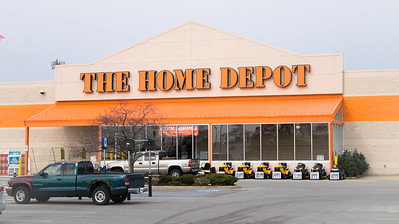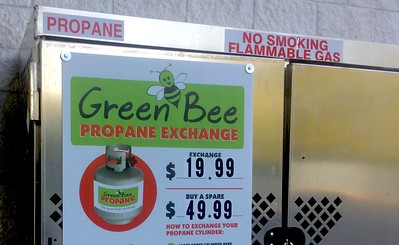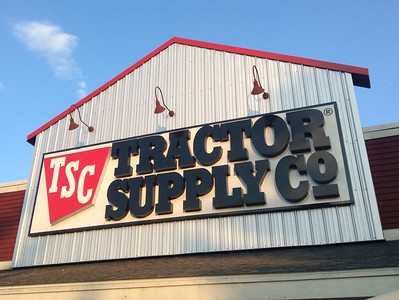
Navigating the world of propane refilling can be daunting, especially when trying to determine the most cost-effective way to keep your tanks topped up. The question that often comes up is: “Is propane refill at a gas station cheaper?” This comprehensive guide aims to shed light on this common inquiry, helping you make informed decisions about your propane needs.
We will delve into the factors that impact propane costs at gas stations, compare the price differences between refilling and exchanging your propane tanks, and evaluate how convenience, location, and tank conditions can influence your decision. Get ready to uncover the potential savings and understand what truly drives the cost of propane refilling at gas stations.
Read this article: Choosing Safe Gas Stations and Avoiding Unsafe Ones
So Is It Cheaper Compared to Other Refill Stations?
Typically, refilling your propane tank at a gas station or a dedicated propane refill station is cheaper than exchanging your tank at a convenience store or other retail location. This is primarily because when you refill your tank, you’re only paying for the propane, not the service of having the tank delivered, collected, inspected, and maintained.
When you exchange a tank, some of the cost you pay is for these service elements, as well as the convenience of the service. Additionally, exchange tanks are often not filled to their maximum capacity (usually about 75%) for safety and transport reasons.
So, while the cost can vary based on local prices, supply and demand, and other factors, refilling a propane tank is often the more cost-effective option. But remember, convenience and personal preference also play a role in choosing between refilling or exchanging a propane tank.
Read this article: Gas Station Worker Cannot Exchange Propane Tank (Reasons Why)
If you have the time and the refill station is conveniently located, refilling your propane tank can be a cost-effective choice. Not only can it save you money, but you can also ensure that your tank is filled to its maximum capacity, thus potentially lasting longer than an exchanged tank.
However, there are a few other factors to consider:
- Time: It usually takes more time to refill a tank than to exchange it. If your time is limited, exchanging could be a better option.
- Availability: Not all gas stations offer propane refills, and the availability of this service can vary greatly depending on where you live. Propane refilling stations may not be as conveniently located as stores that offer tank exchange services.
- Tank Condition: If your tank is old or hasn’t been inspected recently, it might not be safe to refill it. Most tank exchange programs ensure the tanks are up-to-date and meet all safety regulations.
- Size of Tank: Most exchange services offer a standard size of propane tanks (usually 20 lbs). If you have a different size tank, refilling may be your best or only option.
The choice between refilling a propane tank or exchanging it often comes down to a balance of cost, convenience, and personal preference. It’s always a good idea to consider all these factors and choose the option that best fits your specific needs.
How to Save Money When Refilling Propane
Saving money on propane refills comes down to being aware of your usage, shopping around for the best prices, and maintaining your equipment. Here are some tips to help you save:
- Shop Around: Prices can vary significantly from one provider to the next. Take the time to call around or visit various propane refill stations, including gas stations and dedicated propane dealers, to find the best price per gallon.
- Fill Up During Off-Peak Times: Propane prices can fluctuate based on supply and demand, similar to gasoline prices. If possible, try to refill your propane tank during off-peak times, like the warm summer months, when demand for propane is typically lower.
- Maintain Your Equipment: Regular maintenance of your propane appliances can help them run more efficiently, using less propane. Similarly, ensuring your propane tank is in good condition can make refills smoother and safer.
- Use Propane Efficiently: Be conscious of your propane usage. Simple steps like turning down your water heater’s thermostat, insulating your home properly, and using energy-efficient appliances can help you use less propane, saving you money.
- Bulk Purchase: If you use a lot of propane, consider buying in bulk or filling up a larger tank. The price per gallon often decreases as the size of the tank increases.
- Refill Instead of Exchange: Refilling your propane tank is often cheaper than exchanging it, especially if you consider that exchange services usually only fill tanks to 75% of their capacity.
- Keep Track of Your Tank’s Level: Regularly monitor the level of your tank to avoid running out and needing emergency refills, which could be more expensive.
Remember, safety should always be your priority when handling propane. While it’s important to save money, make sure to use reputable refill services and keep your appliances and tanks in good working condition.
Read this article: Can You Exchange Propane Tank at Gas Station?
The Economics of Propane Refill at Gas Stations
A. Detailed breakdown of the costs associated with refilling a propane tank at a gas station.
When it comes to the cost of refilling a propane tank at a gas station, several elements come into play. First, there’s the cost of the propane itself, which is typically charged by the gallon. The price per gallon can fluctuate based on several factors, including market conditions, the time of year, and geographical location.
Additionally, some gas stations may charge a service fee for refilling propane tanks, particularly if special equipment or certifications are required. While not all stations levy this fee, it’s worth considering when calculating the overall cost.
Read this: Which Gas Stations Have Cota Propane Tanks
Lastly, the size of your propane tank can greatly impact the total cost. For instance, refilling a larger tank will obviously cost more than refilling a smaller one. However, the price per gallon generally decreases as the size of the tank increases, resulting in savings for those with larger tanks.
B. Factors that influence the cost of refilling propane.
There are several factors that can influence the cost of refilling propane at a gas station. As previously mentioned, the current market price of propane plays a significant role, as does the time of year – demand for propane usually increases in the colder months, potentially driving up prices.
The geographical location also has an impact. In areas where propane is more widely used, such as rural areas or regions with colder climates, prices may be lower due to higher supply and competition. Conversely, in areas where propane usage is less common, prices may be higher.
Lastly, the size and condition of your tank can affect the price. If your tank is older or in poor condition, the gas station may refuse to fill it due to safety concerns, forcing you to purchase a new tank or seek out an exchange service.
C. Comparison of these costs with the costs of propane tank exchange services.
When comparing these costs to those of propane tank exchange services, it’s essential to note that exchange services often charge a flat rate per tank, regardless of the amount of propane provided. This is a stark contrast to refill services, which charge based on the exact amount of propane needed.
Furthermore, exchange services typically only fill tanks to about 75% of their capacity for safety reasons. This means you may be getting less propane for your money when using an exchange service, making refilling a potentially cheaper option.
However, the convenience and ease of using an exchange service can outweigh this potential cost difference for many people, particularly those who do not use propane heavily or who don’t live near a refill station. In conclusion, while the cost of refilling a propane tank at a gas station can often be lower, the ultimate decision should take into account both financial and non-financial factors.
Convenience Factor: Gas Stations vs. Retail Locations
A. Exploration of the convenience factor of refilling at gas stations.
Gas stations offering propane refills can offer a high level of convenience, particularly for those who frequently travel or live nearby. Many gas stations are open long hours, some even 24/7, making it easy to refill a propane tank whenever it fits into your schedule. In addition, the process of refilling a propane tank can be quick, particularly when the station is not busy, which means less waiting around.
However, there can also be downsides. Not all gas stations offer propane refills, and finding one that does may require a bit of research and possibly driving out of your way. This may be particularly true in urban areas, where propane use is less common.
B. Comparing convenience and availability of gas stations and retail exchange services.
In contrast, propane tank exchange services are widely available at many retail locations, such as supermarkets, home improvement stores, and convenience stores. These locations often have more extensive hours than dedicated propane refill stations, and the exchange process can be as simple as picking up a new tank off a rack outside the store and paying for it at the counter.
The downside to exchange services is that you’re often getting less propane for your money, as exchange tanks are typically only filled to about 75% capacity. Additionally, if you have a non-standard tank, you may not be able to find an exchange service that can accommodate it.
C. Discussion on how convenience impacts the choice between refilling and exchanging.
When weighing the convenience factor, the decision to refill or exchange often comes down to your individual needs and circumstances. If you use propane heavily, live near a gas station that offers refills, and have a standard-sized tank, refilling can be a highly convenient and cost-effective choice.
However, if you don’t use propane very often, don’t live near a refill station, or value the simplicity of the exchange process, then an exchange service may be the better choice despite the potentially higher cost.
Ultimately, convenience is a significant factor in the refill vs. exchange decision, and each person will need to assess their own situation to decide what makes the most sense for them.
Pros and Cons of Refilling Propane at Gas Station
Refilling propane tanks at gas stations can have both advantages and disadvantages, depending on your specific needs and circumstances. Here are some key pros and cons to consider:
Pros:
- Cost-effective: Refilling your propane tank is often cheaper than exchanging it. You pay for the exact amount of propane you get, rather than a flat rate.
- Full capacity: When you refill your tank, you typically get a full tank of propane, rather than the 75% fill you usually get with exchange services.
- Flexibility: Refilling allows you to use any tank that meets safety standards, not just the ones compatible with a specific exchange service.
- Environmentally friendly: Refilling your existing tank is more eco-friendly as it reduces the need for new tanks and the recycling of old ones.
Cons:
- Availability: Not all gas stations offer propane refilling services, so finding one can be a challenge depending on your location.
- Time-consuming: Refilling can take longer than simply swapping out a tank, especially if there’s a line or if the station is busy with other services.
- Convenience: You need to keep track of when your tank is empty, as opposed to simply swapping it out when it’s low.
- Tank condition: The condition of your tank matters more when refilling. Older or damaged tanks may not be safe to refill, forcing you to replace the tank.
- Certification and inspection: Tanks must be re-certified every 10 years in the US, and some filling stations will inspect this closely. If your tank is out of date, you might need to buy a new one.
Each of these factors can play a significant role in your decision, so it’s worth considering each one carefully and deciding which option best fits your needs and preferences.
Is Gas Station The Best Place for Refill
Whether a gas station is the best place to refill your propane tank can depend on several factors, including your location, convenience, cost, and the condition of your tank.
- Location: Gas stations offering propane refill services are more common in some areas than others. In rural or suburban areas, you might have several options available. In densely populated urban areas, these services might be harder to find.
- Convenience: One of the main benefits of refilling at a gas station is convenience. If you’re already there to fill up your car, it can be easy to fill your propane tank at the same time. Many gas stations also have long operating hours, making them accessible for refills at various times.
- Cost: Generally, refilling a propane tank is cheaper than exchanging it, as you pay only for the propane you receive. However, prices can vary, so it’s wise to compare the cost per gallon at different refill locations, including gas stations and dedicated propane dealers.
- Tank Condition: Gas stations will typically inspect your tank before refilling it. If your tank is old, damaged, or hasn’t been re-certified within the required timeframe, the station may refuse to refill it.
- Service: While gas stations can be convenient, they might not offer the same level of service or expertise as a dedicated propane supplier. If you have specific questions or concerns about your propane tank or system, a specialized supplier might be better able to assist you.
While gas stations can be a convenient and cost-effective place to refill your propane tank, they may not always be the best option depending on your specific circumstances and needs. It’s always a good idea to research and consider all your options before deciding where to refill your propane tank.
To Make a Conclusion
The question of whether refilling propane at a gas station is cheaper is not a simple yes or no answer, but largely depends on individual circumstances. While refilling typically provides a better cost per gallon and more propane for your money compared to tank exchanges, availability, convenience, and the condition of your tank can impact this decision significantly.
When refilling, you pay for the actual amount of propane you receive, and you often get a full tank as opposed to the 75% fill that’s common with exchanges. On the other hand, not all gas stations provide propane refill services, and the process can take longer than a quick tank swap.
In terms of convenience, propane tank exchange services are widely available at numerous retail locations with extensive hours. But if you live near a gas station that offers propane refilling and your tank is in good condition, refilling can be a convenient and cost-effective choice.
Ultimately, the decision between refilling your propane tank or using an exchange service should take into account your personal needs, lifestyle, and budget. Each option has its merits, and by considering factors such as cost, convenience, and availability, you can find the best solution for your propane needs. Always remember, though, safety should be your priority when handling propane.

Mike is an experienced propane technician with over 15 years of professional experience in the field. He has dedicated his career to helping customers with their propane needs, from installation to maintenance and repair. Together with Jeremy, he co-founded this website to provide useful information and guidance to customers seeking reliable propane services.



